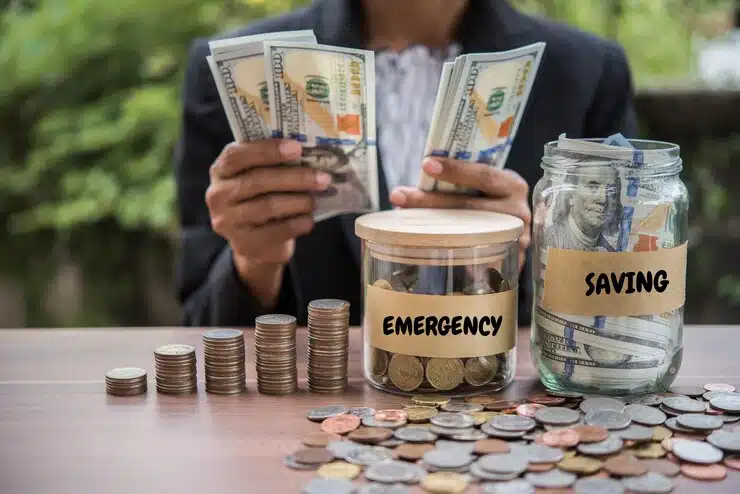In an Emergency Fund unpredictable world filled with uncertainties, having a solid financial safety net can make all the difference. One of the key pillars of financial stability is the establishment of an emergency fund. This fund serves as a buffer against unexpected expenses, providing a sense of security and peace of mind. In this article, we’ll explore the importance of building an emergency fund and offer practical tips on how to create and maintain one.
Why An Emergency Fund?
Life is full of surprises, and not all of them are pleasant. From sudden medical expenses and car repairs to unexpected job losses, financial emergencies can strike at any time. Without a safety net in place, individuals and families may find themselves facing financial turmoil, resorting to debt or other unfavorable measures to cover these unforeseen costs.
An emergency fund acts as a financial cushion, allowing you to weather unexpected storms without compromising your long-term financial goals. It provides a sense of financial security, reducing stress and anxiety during challenging times. Additionally, having an emergency fund can prevent you from relying on high-interest debt, helping you maintain better overall financial health.
Building Your Emergency Fund
Set Clear Goals:
Begin by determining the amount needed for your emergency fund. A widely recommended benchmark is three to six months’ worth of living expenses. To arrive at a realistic target, assess your monthly bills, rent or mortgage, groceries, and other essential costs. Establishing a clear goal provides a tangible target to work toward.

Start Small:
If the prospect of saving several months’ worth of expenses is daunting, initiate the process with a modest goal, such as saving $500 or $1,000. Starting small allows for a less overwhelming entry into the habit of saving, and as you consistently contribute, you can incrementally increase your target.
Create a Budget:
Develop a detailed budget to understand your income and expenses better. Identify areas where you can cut back and redirect funds to your emergency fund. A well-structured budget ensures that a specific portion of your income is allocated to savings regularly, transforming saving into a consistent habit.

Automate Savings:
Take advantage of automation tools offered by banks to transfer a fixed amount of money into your emergency fund each month. This approach ensures that you consistently contribute to your fund without the temptation to spend the money elsewhere.
Choose a Separate Account:
Open a dedicated savings account for your emergency fund. This separation makes it easier to track your progress and reduces the likelihood of dipping into the fund for non-emergencies.
Also Read:- Boost Your Career With An MBA In Finance Now!
Prioritize Consistency:
Building an emergency fund is a gradual process that requires commitment. Even if you can only contribute a small amount each month, the key is to be consistent. Over time, these contributions will add up and contribute to the overall financial resilience of your household.

Maintaining Your Emergency Fund
- Reassess and Adjust: Periodically review your financial situation and adjust your emergency fund goals if necessary. Life circumstances change, and so should your financial planning.
- Resist Temptations: Your emergency fund is not a piggy bank for impulsive purchases or non-essential expenses. Train yourself to differentiate between needs and wants, and only dip into the fund when facing genuine emergencies.
- Replenish Promptly: If you do use your emergency fund, make it a priority to replenish it as soon as possible. Rebuilding the fund ensures you’re prepared for any subsequent unexpected events.
Conclusion
In a world where financial stability is paramount, an emergency fund serves as a crucial tool for securing tomorrow. By setting clear goals, starting small, and prioritizing consistency, individuals can build and maintain a financial safety net that safeguards against the uncertainties of life. Remember, a well-prepared emergency fund can be the financial superhero that saves the day when you need it most.
FAQs
1) What is an emergency fund, and why is it important?
An emergency fund is a financial safety net that individuals or families set aside to cover unexpected expenses or financial emergencies. It is crucial because it provides financial stability and helps avoid going into debt during unforeseen circumstances.
2) How much should I aim to have in my emergency fund?
Financial experts generally recommend having three to six months’ worth of living expenses saved in your emergency fund. The exact amount depends on factors such as your lifestyle, income stability, and the number of dependents you have.
3) Where should I keep my emergency fund?
The ideal place for an emergency fund is in a liquid and easily accessible account, such as a savings account. This ensures that you can access the funds quickly when needed. Avoid high-risk investments for emergency funds.
4) How can I start building my emergency fund if I don’t have much money to spare?
Start small and be consistent. Even saving a small amount regularly can add up over time. Cut unnecessary expenses, create a budget, and allocate a percentage of your income to your emergency fund. Consider windfalls, tax refunds, or bonuses as opportunities to boost your fund.
5) What qualifies as an emergency for using the fund?
Emergencies are unforeseen, necessary expenses, such as medical bills, car repairs, or job loss. It is crucial to differentiate between emergencies and regular expenses to avoid depleting the fund unnecessarily.
6) Can I use my emergency fund for non-financial emergencies?
While the primary purpose is financial emergencies, you may use the fund for critical non-financial situations if it helps maintain your overall well-being. However, it’s crucial to replenish the fund as soon as possible.
7) How often should I review and update my emergency fund?
Regularly review your emergency fund, especially when there are changes in your financial situation, such as a new job, increased expenses, or major life events. Adjust the fund size accordingly to ensure it remains sufficient.
8) Is it advisable to invest my emergency fund for higher returns?
No, an emergency fund should be kept in low-risk, easily accessible accounts. The primary goal is liquidity and stability, not high returns. Investments carry inherent risks that may jeopardize the availability of funds during an emergency.
9) How can I resist the temptation to dip into my emergency fund for non-emergencies?
Create a mental distinction between your emergency fund and regular savings. Establish strict criteria for what qualifies as an emergency, and consider setting up a separate savings account for non-emergency goals.
10) What steps can I take to rebuild my emergency fund after using it?
Rebuilding involves revisiting your budget, cutting unnecessary expenses, and allocating a portion of your income to the fund. Set specific goals and timelines to replenish the fund to its recommended level.





